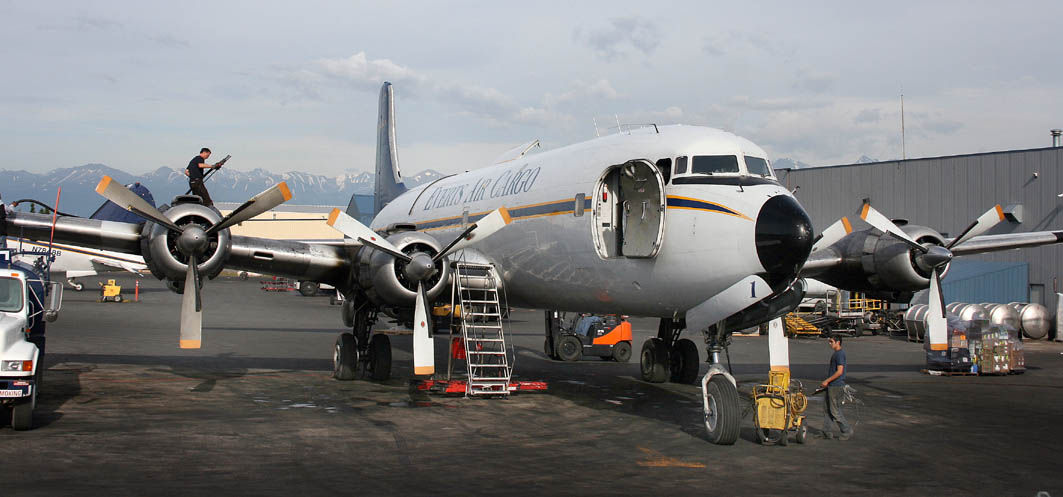
Douglas DC6
 |
| A shiny DC-6 being prepared for take-off with snow-capped peaks as a backdrop - it has to be Alaska. N151 of Everts Air Cargo to be precise, seen in summer 2008 |
| The DC6 emerged when Douglas realised it would have to
upgrade its DC4 design to compete with other post Second World War
rivals such as the Lockheed Constellation. Thus the first DC6 was basically a DC4 with uprated Pratt and Whitney R-2800 engines, a fueselage stretched by 6ft 11ins, and pressurisation. Design work was carried out to a military requirement, as the XC112, during the war but by the time the first aircraft flew, on February 15 1946, peace had returned and the order book could be cleared for civil customers. American Airlines was the first to declare an interest, with 50 aircraft, and United Air Lines followed with an order for 20. The first production machine, seating 52 passengers, took to the air in June 1946 and United introduced the type in November, using it on its transcontinental routes. Production of the basic DC6 reached 175 before production switched to the DC6B with an uprated R-2800 engine and space for 54 passengers, or 102 in a high density layout. In parallel with the DC6B, Douglas also produced the DC6A Liftmaster freighter without windows. Seventy-four DC6As and 288 Bs were produced, the last B being delivered in November 1958. The DC6C was a convertible DC6A with windows. The type found favour with many major carriers around the world and also saw widespread US military service as the C118. These aircraft were retired by the US military by the late 1970s and those fitted with freight doors found many devoted operators around the world, notably in the USA and in Central America and Canada. Today, the DC6 flies on as a freighter in surprisingly large numbers, with Everts Air Cargo and Everts Air Fuel in Alaska being the major operator. |
| Contents | Photos | Census | Update |